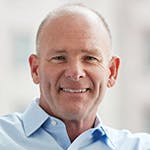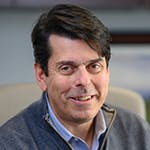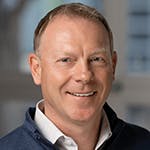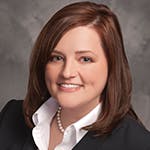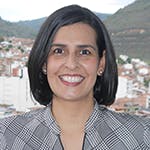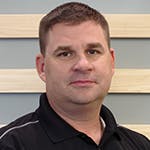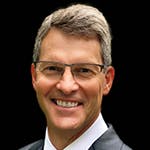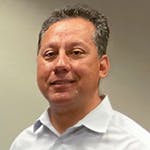Best of ISE’s 2022 Executive Interviews
Hang with the Smartest People in the Room for a Few…
You know the saying, “If you’re the smartest person in the room, you are in the wrong room.”
Many variations of this quote have been shared to state the obvious but important message that we should surround ourselves with people who are more intelligent than we are. Or, maybe those who are equally as smart but tackle problems in different ways than we do.
But how often do we act on that message? Not as often as we should.
“I’ve had to take a stand for what I believe is right—for the company I serve and for the future of our industry. In some situations, I didn’t follow what industry leaders, consultants or advisors recommended as a 'safe' strategy. Playing it safe is never a guarantee of the best outcome. In my mind, if you risk nothing, then you risk everything.” Charlie Cano
That’s why we revisited thoughts offered from some of the super smart leaders we interviewed throughout 2022. From CEOs to boots-on-the-ground field leaders—we’ve snagged the best nuggets of wisdom from our 2022 executive interviews for your career-enhancing pleasure.
We challenge you to spend a bit of time letting their insights settle in your brain. Try not to skim through their insights too quickly. Sometimes lingering with different perspectives helps them simmer, gather context, and turn into something meaningful.
ISE: What "secret sauce" should potential vendor partners use to work successfully with the Brightspeed team? Why is it different than working with other broadband providers?
Tom Maguire, Chief Operating Officer, Brightspeed: Given newer technologies, we’re looking for partners to consider "cost-plus" models as opposed to the traditional Time & Material or Statement of Work ways of conducting business.
ISE: What is it like to work for you? (Source: Robert Sutton, author and management professor at Stanford via http://www.inc.com)
Bob Mudge, Chief Executive Officer, Brightspeed: We are not here to surprise or outsmart anyone. Tom, Chris, and I share an important trait: the burning desire to deliver on our objectives and promises. People working with us do not find us getting distracted on secondary priorities—and we don’t want our people to get distracted either.
ISE: About 86% of company executives name skilled labor as the top challenge facing the industry. What are your thoughts about this?
Chris Creager, Chief Administration Officer, Brightspeed: We recognized that the industry is facing hiring and retention challenges when we first discussed our vision for Brightspeed, and we knew we wanted to be an appealing employer. Part of that appeal is our focus on building a diverse team of employees who are fierce advocates for more accessible, inclusive, and high-quality Internet. Diversity isn’t a buzzword to us; we believe diversity promotes equity in the communities we serve.
ISE: Share one problem/challenge you are passionate about solving for the ICT Industry.
Jim Capuano, CEO, Horizon: Cost-effective make-ready—this one issue has handicapped our ability to overcome The Digital Divide! The federal and state money that is being awarded to service providers is not going to the fiber and optronics that are needed to provide broadband access. The funds are being spent on upgrading utility infrastructure. To be clear, I’m not grousing about the utilities. These upgrades are needed to ensure that the underpinnings of our broadband infrastructure are solid. Commercial power is equally critical to ensure this. My point is: why isn’t there a larger initiative to improve the utility rights-of-way that doesn’t saddle the broadband infrastructure provider with the cost? Much of the broadband deployment is done with private funds, and attachment costs to be on the poles have killed many business cases. Simply put, more private money would be spent on broadband deployment if not for high make-ready costs.
Johan Ottosson, Vice President Strategy, Arelion: By taking the lead in introducing next-generation routing silicon, open optics, and open line systems, we found ways to reduce power consumption of 80-90% per bit with 80% success within our IP domain transition. We have set an ambitious migration plan that will retire eight different platforms by 2025.
Wade Soczka, Director of Network Construction, TDS Telecom: Transforming communities does not come without disruption and coordination. Many local jurisdictions do not have staff to handle permitting, locating, and inspection tasks in support of builds, thus slowing progress. While our goal is not to build entire smart networks, we often forge strategic partnerships with local communities, helping each other build networks in support of respective goals.
Mary Nolan, Executive Director – Network Assurance, Verizon: Your physical and mental health are everything. Understanding what a healthy work/life balance is for you is essential. It’s up to each employee to establish boundaries for themselves and that differs based on the person. Climbing the corporate ladder by sacrificing yourself, your family and friends is not sustainable. The first thing you need to do is recognize what provides you that balance. For some it’s long weekends, some need a week, and others need two weeks.
I know a lot of people that it literally takes them days to unplug and start enjoying their time off. I know others that find the stress of returning to a mound of work makes the idea of taking 2 weeks unthinkable. There is no magic solution for everyone. We are all unique with different needs and tolerances. Once you know what you need to reenergize, to come back to the office without feeling you compromised other parts of your life, you have found your balance.
Brooks Fitzsimmons, Consumer Ecosystem Health, AT&T: The labor elasticity of developers coding in common "modules" and "platforms" fundamentally is becoming a double-edged sword. It will be critical to establish robust and ongoing training, pipelines into the colleges/universities, and public policy initiatives that incentivize skills pivots to maintain and grow the labor pipeline.
ISE: The great resignation is not ending. How does your team hold onto those professionals with the most talent and the greatest work ethic when they must upskill to remain relevant to TDS? That means these team members must work their “regular” jobs and at the same time learn new skills for the future. They also desire a work/life balance. Share your thoughts about the “rub” of this reality to employers AND employees.
Ken Paker, SVP of Information and Network Technologies and CTO, TDS Telecom: I love this question because it is important for both employers and employees to recognize that digital transformation benefits both groups. We often talk about digital transformation from the employer’s perspective, typically cost structure related. While that is all true, there are also significant benefits for individual employees.
Take our proactive network maintenance initiatives, for example. Those capabilities will allow our employees to offer a higher grade of service but also on a more natural schedule as opposed to being under pressure due to restoring an outage or fault.
We have seen a lot of quality-of-life improvements for our associates as we go through these transitions. Of course, they are transitions nonetheless and we must always be patient with changes. To encourage adaptation to change, we have a 100% tuition reimbursement program to help employees achieve these transitions and meet their aspirations.
Noah Drake, President, Americas, Telstra: Satellite services still rely on telcos for ground stations and transport, and operators regularly face barriers to market entry. These issues are often best addressed through mutually beneficial partnerships with telcos. Regardless of which technology is delivered to the end user, there will always be a need for collaboration. Embracing this reality rather than fighting it is the more logical path to long-term success.
ISE: What emerging or disruptive technology excites you the most for the ICT industry? Why?
Martha Suárez, President, Dynamic Spectrum Alliance: Spectrum sharing is the overarching technology that excites me most for the ICT industry. As the potential of Wi-Fi 6E and 5G emerges, this is how new applications will develop, and how underserved populations will have their connectivity needs met.
While Internet demand and usage surges, spectrum is a finite source. It is not a material that we can just find more of or dig up out of the ground, which means we must find new ways to make our usage more efficient, in ways that allow for innovative technologies. The foundation of which is based in legislature and regulation.
Kevin Tusing, Application Engineer, Clearfield: Operators will need to move quickly to hire or contract personnel and work with them to provide the training necessary to perform efficiently. But the days of lengthy training periods over a diverse collection of products and processes are gone. Focused training on specific materials and related processes needs to be developed.
ISE: Share one problem/challenge you are passionate about solving for the ICT Industry.
Ben Goth, Vice President of Network Services, TDS Telecom: At TDS Telecom, we are passionate about driving change to deliver fiber to as many customers as possible. We are striving for changes and process refinements at every level in the fiber ecosystem to make enabling as many customer connections as possible faster. Solutions developed and commonly used in high density fiber builds do little to help enable customers in less dense areas with fiber. The designs and traditional build methods must be changed to reduce complexity and decrease the cost and time to implement fiber solutions. We must repeatedly look at every step in the process, questioning how it is done and why it is required to find opportunities for efficiencies.
ISE: What are some proactive approaches you recommend to control OpEx?
Troy Johnson, Vice President of Network Engineering, Consolidated Communications, Inc.: Some of the proactive measures to control OpEx include constant partnership with vendors so that there is an understanding that we need to be successful together. There have been recent trends with vendors to create a more sustainable revenue stream through licensing and maintenance, which is understandable, but it needs to make business sense for all sides. Strong partnership and collaboration are key to finding agreements that work for everyone.
And of course, another focus is around migrations away from older technologies that require focused resources to maintain and either one-off maintenance agreements or sparing arrangements that are outside of our growing technology set.
Joshua Seidemann, Vice President Policy and Industry Innovation, NTCA– The Rural Broadband Association: …instead of focusing solely on how many miles of fiber are deployed, or how many locations are served (both important metrics), let’s also look at the ROI on rural broadband in terms of how many students realize broader opportunities through remote learning and distance education; how many patients enjoy better health outcomes through telehealth; and how many businesses and workers participate in a truly global marketplace. Broadband has an exponential multiplier impact for individual and community benefit. It is Metcalfe’s Law on steroids.
ISE: If energy were free (and we’re not talking power), what would your team do differently?
Kevin McDorman, Vice President, Customer Care, AT&T: Thinking more broadly from the context of my team, imagine a world with no constraints. No limiting factor of time or budget. If energy is free, we have unlimited resources at our disposal. In this world, technologies and capabilities rapidly enhance, unlocking the art of possible for people everywhere. Friction in service no longer exists and we achieve instantaneous operating capacity. Data systems have iterated and transformed to a point where insights are known as they are occurring.
Zooming back into my team, we would leverage this velocity of data and process to effortlessly identify opportunities and solve with agility. With complete, data-stitched stories available to us in real-time, we would take the optimal path towards solutions that maximize the experience of every team member and, in turn, every customer. If energy were free, we achieve seamless collaboration, ideation, implementation, and execution.
Shifting back to the world we live in where energy is not free, our task is to optimize with what we have to come as close as we can to the effortless end state previously described. This requires constant attention towards our north star and our agreed-upon guiding principles as we journey in that direction. It takes trust, grit, and a willingness to adapt so that we can still get to where we set out to be, despite any obstacles or resource constraints that come our way. Most of all, it takes the collective vision of what that seamless, unconstrained world looks like, so we can strive for something better than where we were yesterday.
ISE: How has your team removed silos and barriers?
Johan Ottosson, Vice President Strategy, Arelion: One of our Objective and Key Results (OKR) for next year is to improve problem and incident management quality. This is a team effort, including a new network, operations center, refining customer support processes and a centralized IT project innovating new inventory and service impact analysis systems to empower teams with a shared understanding of the same data. This requires sales input on customer pain points. Collapsing silos is a journey, but we are definitely progressing.
ISE: How much of your success comes from luck or coincidence versus grit and perseverance?
Brooks Fitzsimmons, Consumer Ecosystem Health, AT&T: I’ve been listening to Deepak Chopra’s book, Abundance, and the question posed reminds me of the abundance mindset. Dr. Chopra said, “Good luck is opportunity meeting preparedness.” Put simply, you and your teams could be plowing forward with grit, gumption, perseverance, and diligence, but if you can’t lift your collective heads up to be mindful and receptive to the opportunities around you, you’ll miss them.
I’ve encountered this a lot in my transformation roles. Oftentimes there is abundant “fuel” for change, including technologies, engineering, talent, and customer needs, but lacking the “spark” of mindful receptiveness, those coincident opportunities could remain dormant. Net, net, be ready for those “luck” or “coincidence” moments, so you may manifest them into “good luck” and “fortuitous coincidence” successes.
Some who have also stood out as exceptional had little or no formal higher education yet were the best I ever had the privilege to work under. Generally, those who came from the field got the respect of the employees under them, they knew how to speak the language and relate to what the technicians were saying.
In the military, it was about being a team and relying on the person next to you. We need to focus on building true teams from within our companies.
Wade Soczka, Director of Network Construction, TDS Telecom: In order to move forward in the ICT industry, we have to find ways to speed up construction while not impacting quality and effectiveness. TDS Telecom is passionate about digitizing outside plant construction management. The immediate goal is near automation for capture of production, in-field construction changes, hard surface disturbances/restoration, and quality control. Of course, it is easier said than done but this type of management will be instrumental to successful fiber builds…
ISE: What’s the biggest professional risk you’ve taken?
Charlie Cano, General Manager and CEO, Etex Telephone Cooperative: There are times in my professional career I had to take a stand for what I believe is right—for the company I serve and for the future of our industry. In some situations, I didn’t follow what industry leaders, consultants or advisors recommended as a “safe’’ strategy. Playing it safe is never a guarantee of the best outcome. In my mind, if you risk nothing, then you risk everything.
My risks are not always the most popular moves but taking risks for what I believe in is exactly what has and what will continue to advance my team and this industry forward.
About the Author
Sharon Vollman
Content Ambassador for ISE EXPO
Sharon Vollman is the Content Ambassador for ISE EXPO. She is passionate about collaborating with thought leaders, SMEs and hard-working doers who design, plan and deploy ultra-reliable broadband networks. Vollman is committed to creating a variety of educational offerings for ISE EXPO attendees that inspire them to connect every U.S. citizen with the broadband networks we all want for our children and grandchildren.
Vollman has created educational partnerships with Broadband Service Providers including AT&T, Verizon, Lumen, Frontier Communications and others. She has covered the telecom industry since 1996.


